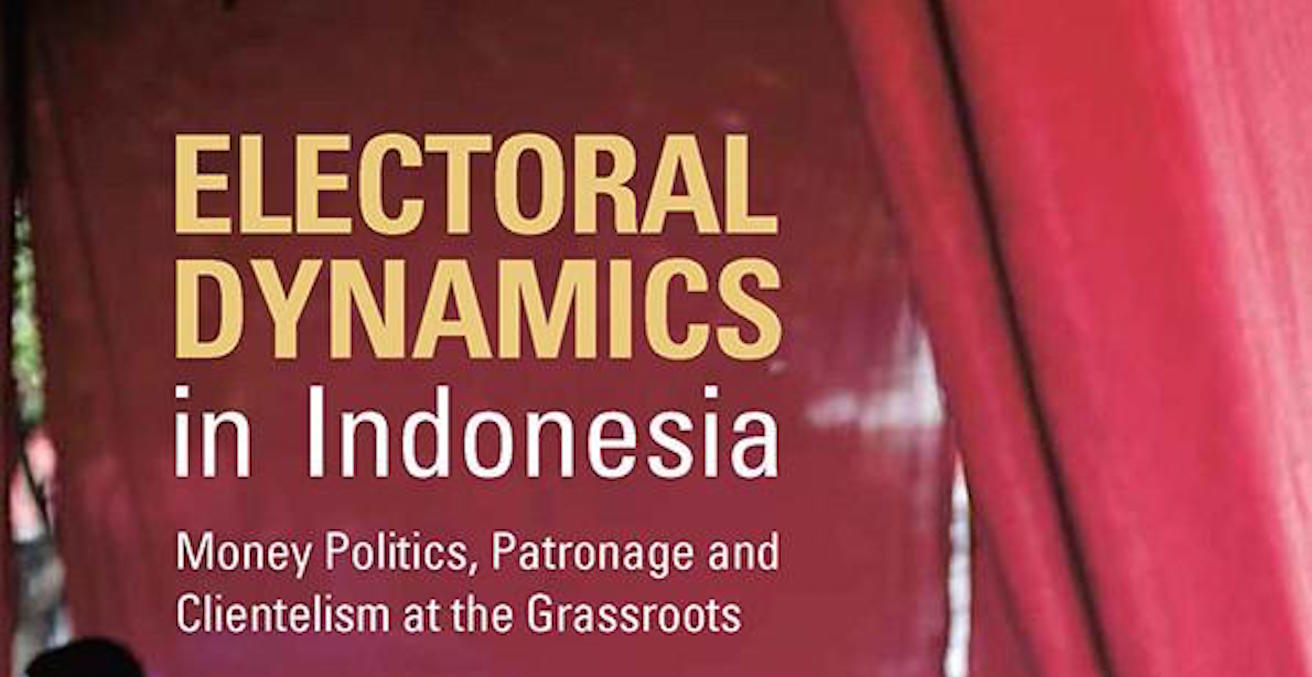Reading Room: Electoral Dynamics in Indonesia

Understanding political processes in a country of Indonesia’s geography and population size—not to mention ethnic, religious and socio-economic heterogeneity—is a daunting yet critical task. With general elections due in April next year, how do politicians succeed in a democracy just two decades’ old with 260 million citizens?
A group of researchers from the Australian National University and the University of Gadjah Mada set out to answer this question by studying the dynamics between candidates and voters at the local level across 20 different provinces in the lead-up to Indonesia’s April 2014 legislative elections. The product, Electoral Dynamics in Indonesia, is a richly detailed examination of politicians’ strategies at the grassroots, with a particular focus on money politics, patronage and clientelism.
Put simply, patronage is the material benefit politicians distribute to individual voters, campaign workers or contributors in exchange for political support. That could mean giving individual voters cash payments or items such as prayer mats, rice or pot plants, or giving groups or communities special benefits like sporting equipment or construction projects. On the other hand, clientelism refers to the “personalistic relationship of power” within which the patronage is exchanged for political support. Of course, these processes are not linear or straightforward in practice, which is exactly what the book seeks to explore.
One major finding is that, if the 2009 campaign exhibited nascent signs of this kind of money politics, in 2014 this was unequivocally the norm. Every subdistrict studied demonstrated that patronage was central to campaign strategies. This institutionalisation of corruption is lamentable and significant. The book’s second major finding is, in order to translate patronage into actual votes, that candidates engage tim sukses (success teams)—informal networks of brokers embedded within communities—to ensure voters who receive gifts comply with the “deal.”
As the book makes clear, candidates are highly creative in their attempts to gain voter attention, carefully catering to religious habits or local preferences. One tactic is a serangan fajar (dawn attack), whereby payments are distributed just after dawn prayers; the terminology of which invokes Indonesia’s revolutionary history. One candidate in East Belitung, Sumatra, hired a SPG aka “Sales Promotion Girl” (a colloquial term for young and generally attractive women employed for product promotion) to accompany him on his house-to-house visits.
Such diverse practices are showcased well by the book’s geographic structure, which sweeps from west to east of the archipelago, with each chapter focussed on one electoral subdistrict. This usefully allows for a granular look at local conditions as well as one or two major thematic issues like identity politics. To highlight the operation of patronage and clientelism in different socio-economic and political contexts, the researchers ventured into urban and rural settings, mono-ethnic and diverse districts, and into Muslim-majority and Christian-majority areas.
The minor downside of this approach is that the reader, overwhelmed by the specifics of 22 colourful cases, might lose sight of broader trends. A brief conclusion, reiterating major themes, highlighting patterns between subdistricts and, most importantly, discussing the implications of the 2014 developments, although not essential, would have been a welcome bookend to the work. The consequences of such ubiquitous illegal practices as well as the entrenchment of corruption at the grassroots will no doubt flow into 2019’s elections.
Studying Indonesia’s elections is a massive undertaking, and the editors are frank about the research’s limitations: it does not seek to provide definitive answers to thornier questions such as causation and variation, and thus it is far from the last word on money politics, patronage and clientelism in Indonesia. The approach, however, has been reproduced in a sister volume on Malaysia and, according to the editors, will be applied to the Philippines and Thailand as part of a larger study.
The editors and authors are to be commended for painstakingly recording and analysing the complexities of Indonesian electoral campaigning in 2014 into one volume. Electoral Dynamics in Indonesia will naturally appeal to seasoned Indonesia watchers and students of comparative democracy but, for all readers, will yield significant insights into past and future patterns of Indonesian politics at the grassroots, particularly as 2019’s elections loom large on the horizon.
Edward Aspinall and Mada Sukmajati, eds. Electoral Dynamics in Indonesia: Money Politics, Patronage and Clientelism at the Grassroots, (Singapore: NUS Press).
Natalie Sambhi is a PhD candidate at the Strategic and Defence Studies Centre, Australian National University, focussing on the Indonesian military. She is also a Research Fellow with the Perth USAsia Centre. Natalie is a Past President of the AIIA’s ACT Branch.
This article is published under a Creative Commons Licence and may be republished with attribution.





